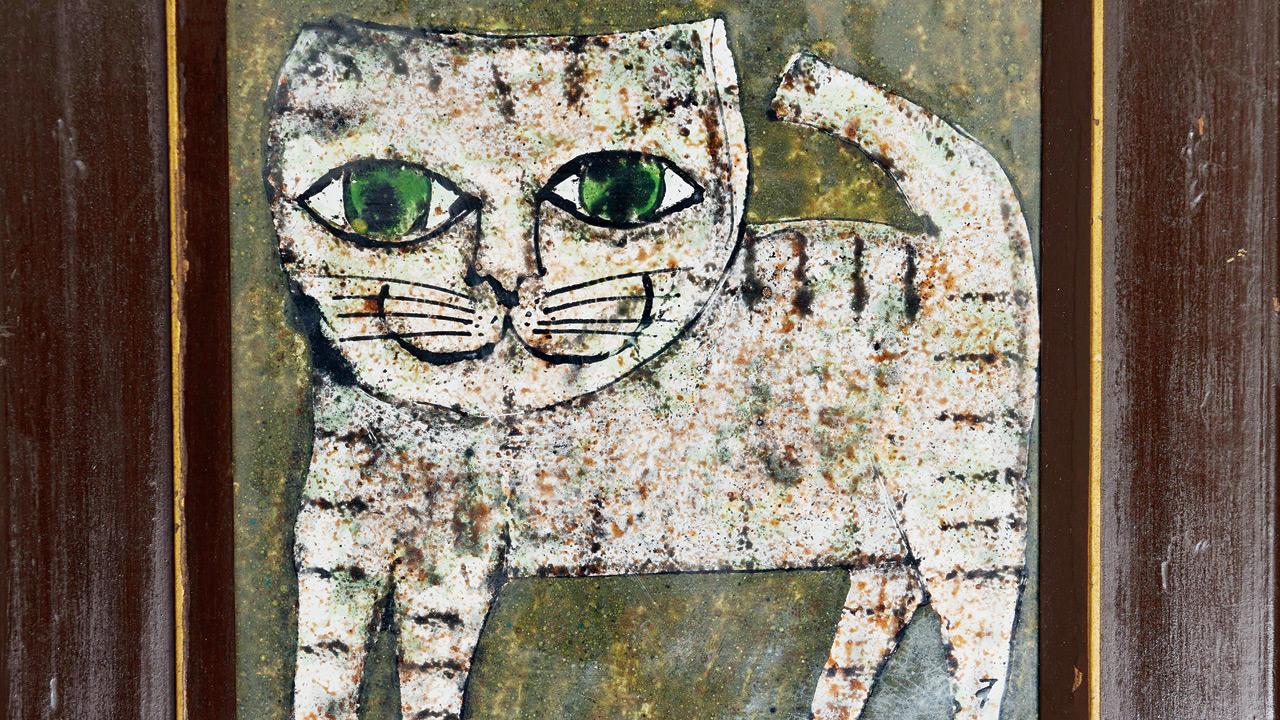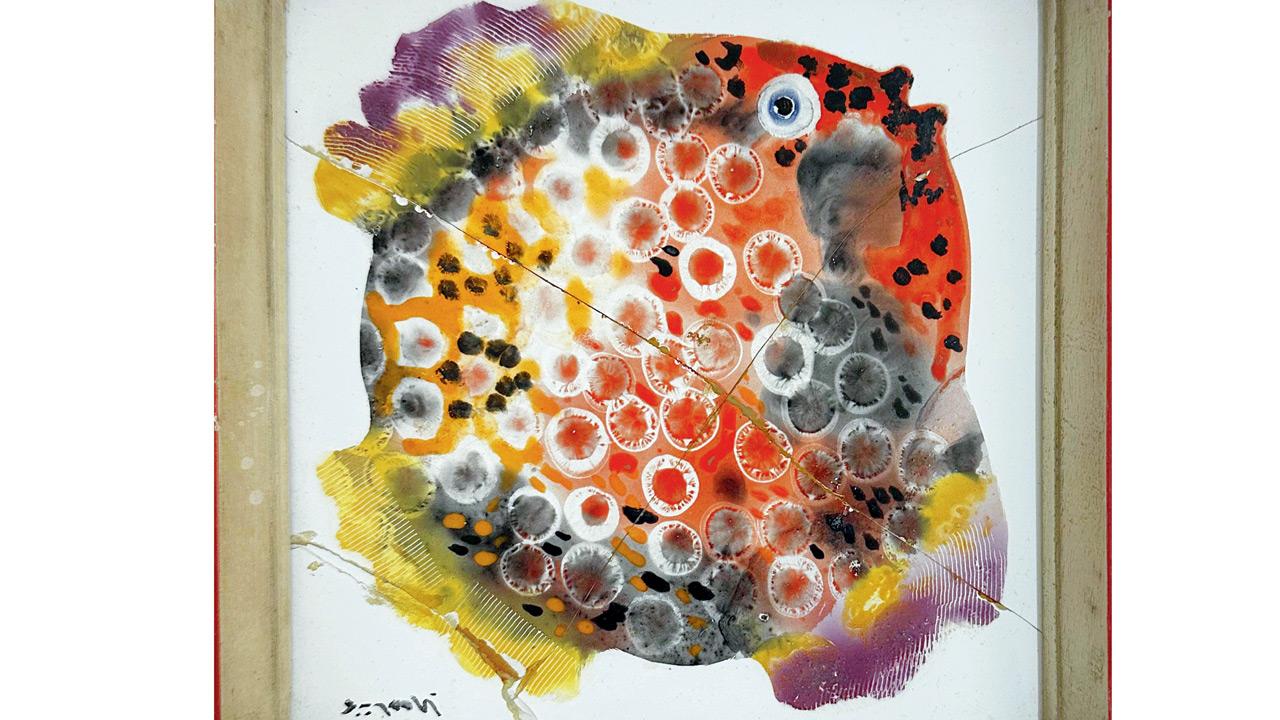How a Polish emigre, a quiet visionary, and ceramic tiles shaped an overlooked chapter in Indian modern art

A painting by Badri Narayan from the Haresh Mehta collection
It started, as many stories do, with a chance encounter. Curator Puja Vaish was browsing the Jehangir Nicholson Art Foundation’s collection when she came across ceramic works by artist Vijoo Sadwelkar — rare survivors from a near-forgotten studio called Vitrum. But it wasn’t until she met Haresh Mehta, heir to the family that had once run the studio, that the missing pieces began to come together — quite literally. Mehta had preserved an astonishing number of original works, and suddenly, a full exhibition didn’t just feel possible — it felt necessary.
On view at the JNAF Gallery at CSMVS Museum, A Glazed History: Badri Narayan & the Vitrum Studio is the first retrospective to showcase this lost fragment of post-Independence Indian art history. Running from the 1950s to the 1970s, Vitrum was a studio that blurred the lines between art, craft, and design, inviting artists to experiment with hand-painted ceramic tiles and Venetian glass mosaics — not for elite collectors, but for the everyday home. Founded by emigre glass expert Simon Lifschutz and his wife Hanna, the studio operated out of Mumbai’s Kemps Corner and later became a crucible for artistic cross-pollination.

A Vijoo Sadwelkar work, from the Pheroza Godrej collection
At the heart of this story is Badri Narayan — one of India’s most distinctive modern artists, and Vitrum’s first and eventually ‘chief’ artist. But Narayan was more than just a maker; he was a quiet visionary. Deeply shaped by the philosophies of John Ruskin, William Morris, and the Arts and Crafts movement, he imagined a world where art wasn’t confined to galleries, but embedded into the fabric of daily life — adorning buildings, enlivening public spaces, and speaking directly to the people. “His vision of integrating art with architecture and public space anticipates current discussions about India’s urban development,” notes Vaish.
Indeed, many of Mumbai’s now-vanished glass and ceramic murals trace back to Vitrum. In one such discovery, artist Jatin Das confirmed that the materials for his Dena Bank mural came from the studio, and that Narayan had been present during its creation. The mural is gone, but a rare photograph of it features in the exhibition, alongside works by Narayan and others sourced from private collectors and estates.
Also on display are archival photographs, Narayan’s writings on public art, and a 1973 Films Division short film featuring his illustrations. Together, they paint a vivid picture of a studio that, for nearly two decades, quietly sidestepped the rigid hierarchies between fine art and decorative design. The show compels us to reconsider what counts as art, whose stories endure, and how we might imagine public art in contemporary India—not as an afterthought, but as an integral part of how we build, live, and remember.
WHAT: A Glazed History: Badri Narayan and the Vitrum Studio
WHEN: Till Aug 31, 10.15 am to 6 pm
WHERE: Jehangir Nicholson Gallery, Chhatrapati Shivaji Maharaj Vastu Sangrahalaya, MG Road, Fort
CONTACT: 022 6958 4451
 Subscribe today by clicking the link and stay updated with the latest news!" Click here!
Subscribe today by clicking the link and stay updated with the latest news!" Click here!










